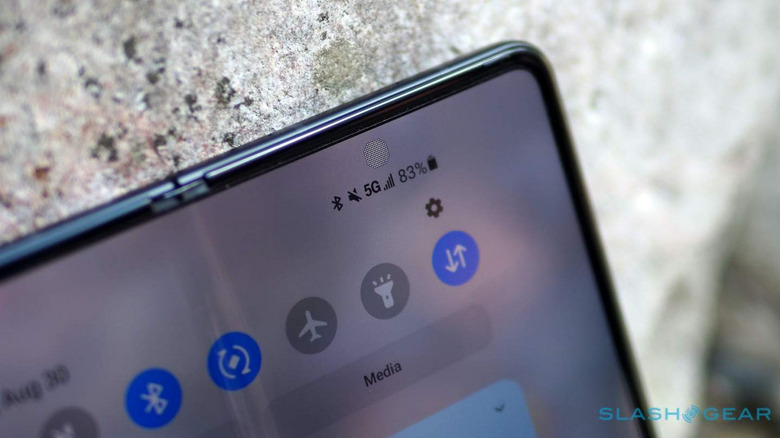iPhone 15 And Galaxy Z Fold 5 Rumored To Come With Under-Display Selfie Cameras
The iPhone 15 Pro will reportedly push the Face ID sensors beneath the screen, essentially hiding the authentication hardware in plain sight. But the tech will first make its debut on Samsung's foldable flagship for 2023, tentatively called the Galaxy Z Fold 5. As per The Elec, Samsung is working on the next-gen display tech that will allow the entire camera and biometric authentication system to get pushed beneath the screen. More importantly, it will all remain invisible when not in use. Samsung has already applied a less advanced version of the tech on its current foldable flagship, the Galaxy Z Fold 3, which features a hidden selfie camera on the inner foldable display.
The tech is officially marketed as a UPC, short for Under Panel Camera, but it's still a work in progress. The camera is not visible to the naked eye, unless one looks at it from close proximity, which is when slightly fuzzy pixels become prominent on the tiny area right above the selfie camera. The likes of ZTE started offering the tech years ago, with Xiaomi and Motorola also giving it a try on their flagships in the subsequent years. Apple, on the other hand, has reportedly been testing the aforementioned tech for a while. According to a 2021 report from The Wall Street Journal, Apple has been toying with putting both the Touch ID and Face ID hardware beneath the screen.
Promising tech, but far away in the future
A Bloomberg report from last year also claimed that under-screen Touch ID was on the test table at Apple for iPhones slated to arrive in 2021. That didn't happen, as the entire iPhone 13 portfolio is still loyal to the Face ID system. For the iPhone 14 Pro duo, Apple will reportedly drill holes in the screen — a pill cutout for the Face ID hardware and a circular hole for the selfie camera. The latest report coming from South Korea pins the hopes of an under-display Face ID on the iPhone 15 Pro, with Samsung Display acting as the architect behind it.
For Face ID parts such as the IR camera and flood illuminator to work, the display area above it needs to offer the highest level of light transmittance to ensure speed and accuracy. In order to achieve that, Samsung and its partner OTI Lumionics are experimenting with a novel cathode deposition tech that relies on an open metal mask. The cathode pattern is designed in such a way that the whole sheet remains transparent, allowing the maximum amount of light to pass through. As these are supply-chain-based rumors, depending on parameters like yield and efficiency, the plans might change or get delayed down the road for both Apple and Samsung.

